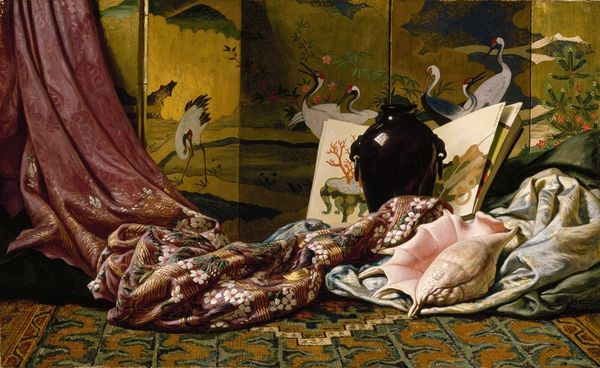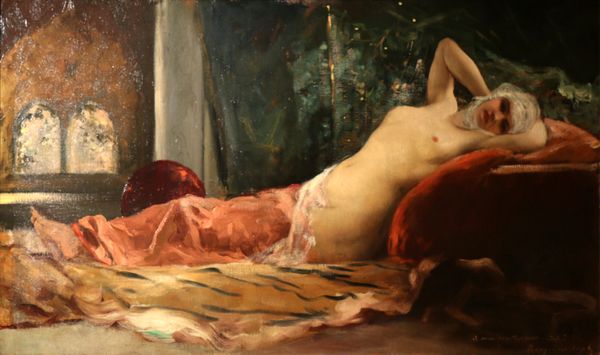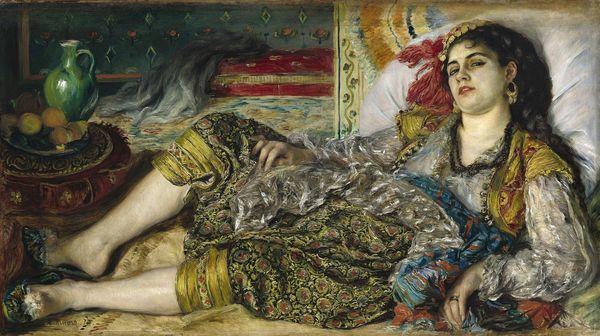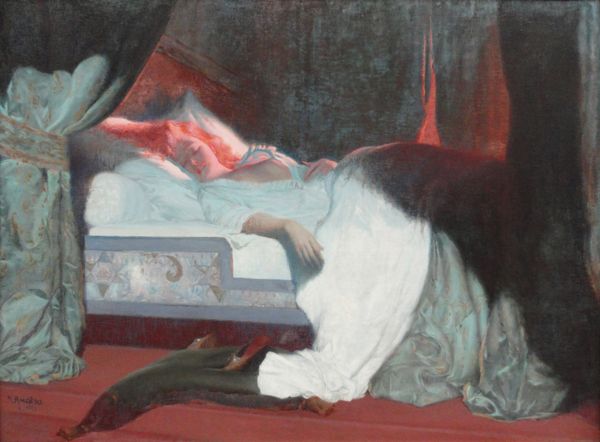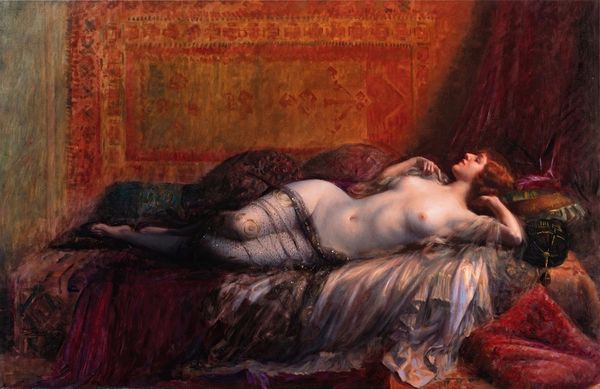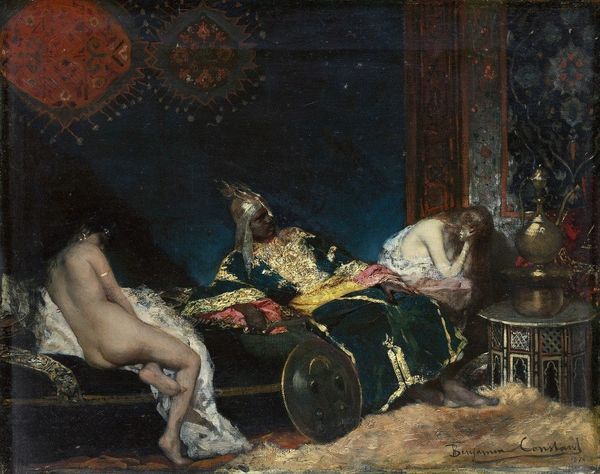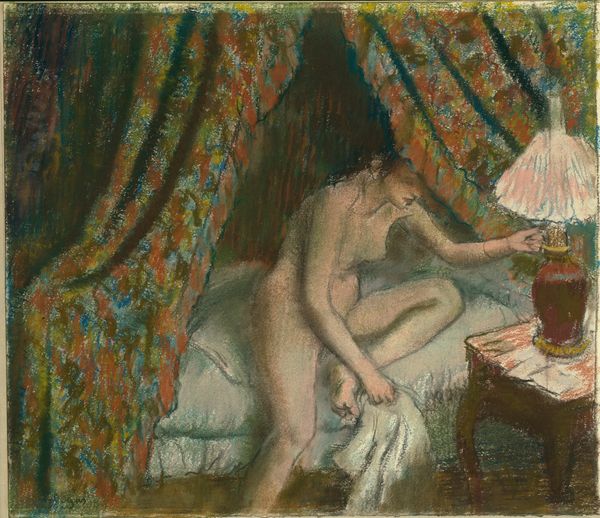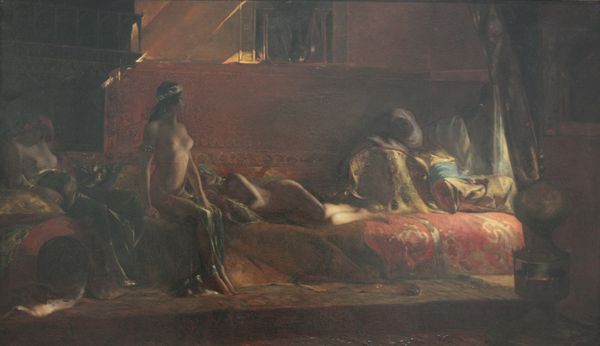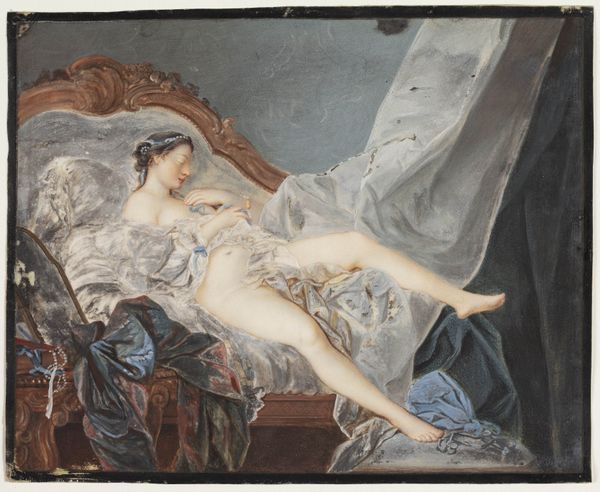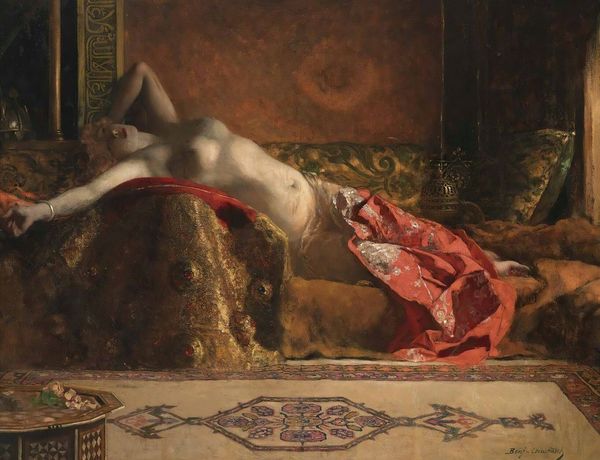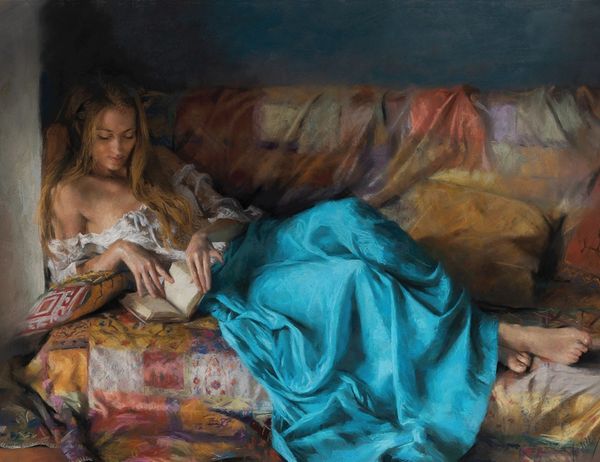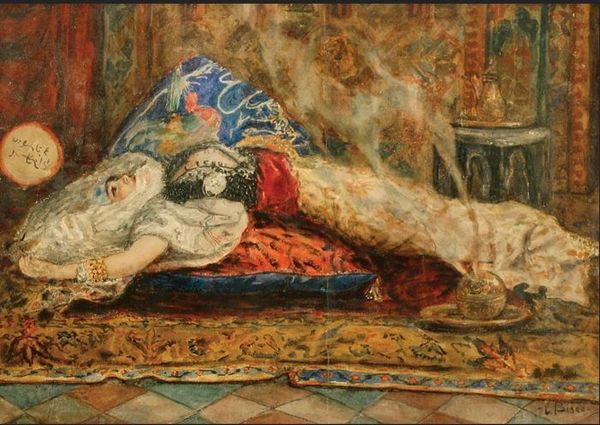
painting, oil-paint
#
portrait
#
painting
#
oil-paint
#
figuration
#
oil painting
#
romanticism
#
orientalism
#
genre-painting
#
nude
Copyright: Public domain
Editor: So, here we have Jean-Joseph-Benjamin Constant’s *Odalisque*, an oil painting. It certainly evokes a sense of languid opulence, doesn’t it? The reclining figure, the fabrics… What catches your eye when you look at this painting? Curator: The weight of cultural expectations and fantasies, really. Constant taps into a long lineage of Orientalist depictions, where the "Orient" is a stage for European projections of desire and power. Notice how the woman's pose and the implied voyeurism solidify the male gaze. What memories and associations does that bring up for you? Editor: It definitely feels like an outsider’s perspective, creating an exotic other. The symbols like the tiger skin on the floor reinforce that, right? It’s like a visual shorthand. Curator: Exactly. These objects aren’t just decorative; they are signifiers, each carrying cultural baggage. Think about how the “Odalisque” as a subject evolved over centuries – a European male fantasy depicting servitude and sexual availability, disguised by painterly skills, romanticism, and a thin veil of the ‘exotic’. It’s not just about what’s depicted but who is doing the depicting and *why.* What does the composition say about her agency versus her objectification? Editor: So the composition reinforces her lack of agency? It’s all designed to showcase her as an object, not as a person with her own story. Curator: Precisely. The framing, the other figures observing her, even the soft, hazy lighting… All contribute to a very specific narrative, one steeped in a colonial mindset. Considering today's lens, how should the art world approach artwork containing colonial imagery and underlying racism? Editor: It's powerful to understand the symbols and baggage embedded within seemingly beautiful art. Now, when I see those ‘exotic’ details, I'll question the artist's motives. Curator: And that critical awareness is the key, understanding that these images shape—and are shaped by—our collective memory.
Comments
No comments
Be the first to comment and join the conversation on the ultimate creative platform.
